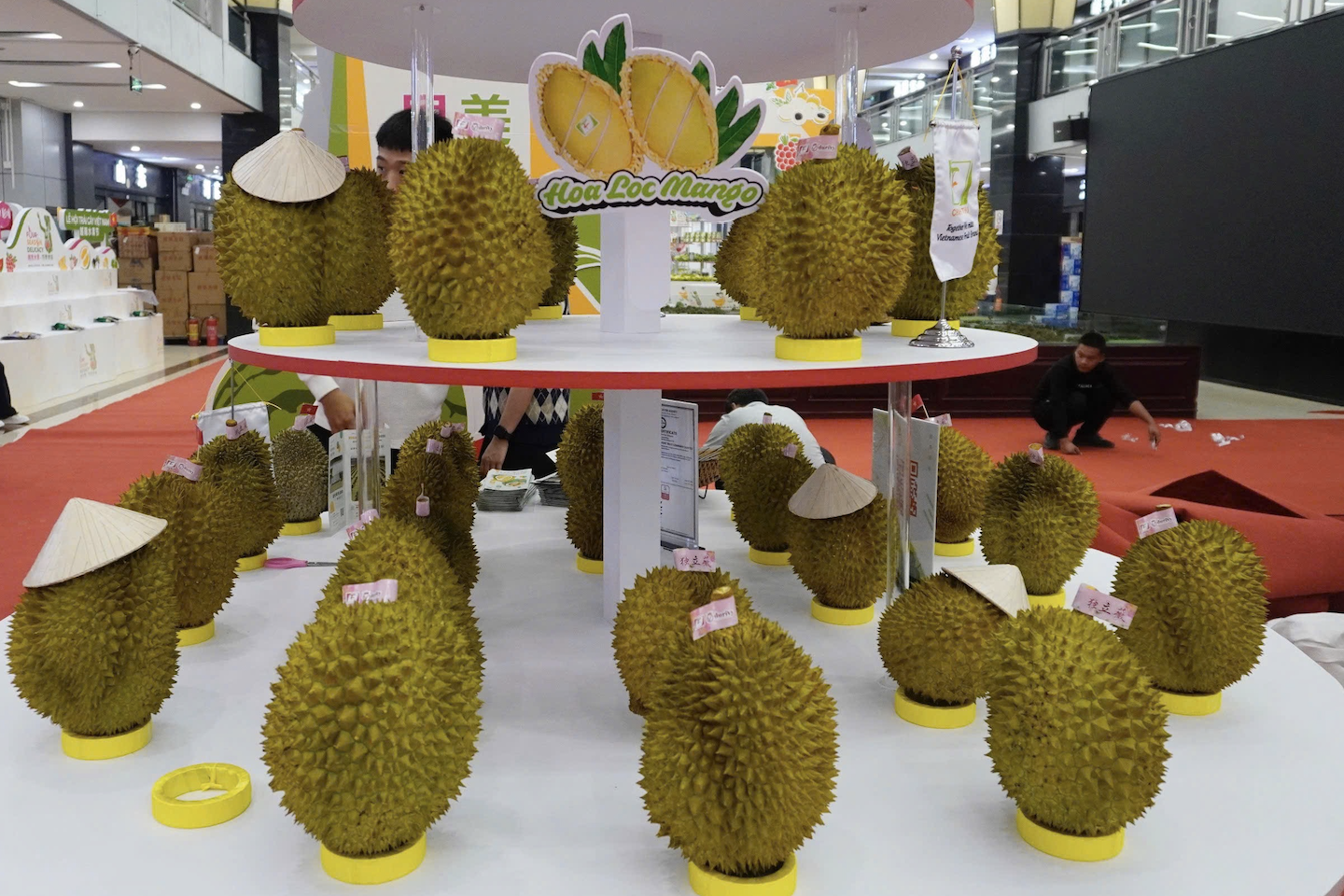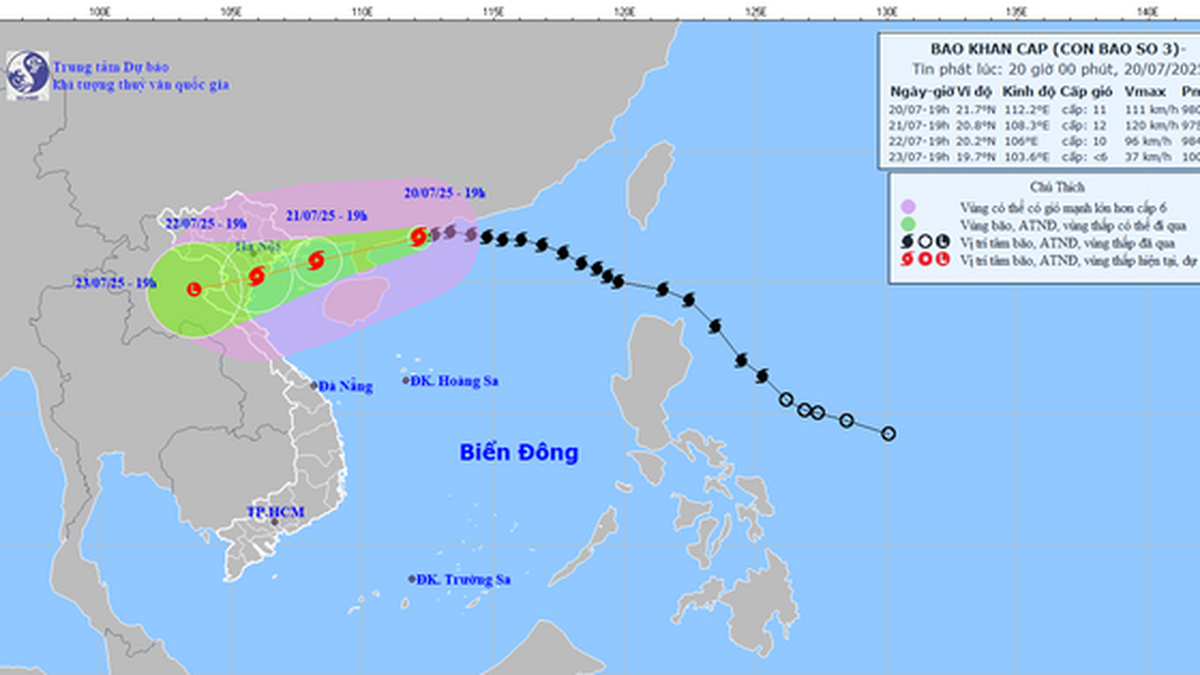According to preliminary statistics from the General Department of Customs, by the end of September, the export value of fruits and vegetables reached 5.64 billion USD, a sharp increase of 33.9% over the same period last year and became the third highest value commodity group in the agricultural sector (after forestry and aquatic products).
The above results are largely due to the contribution of official durian exports to the Chinese market. In addition, there are also key fruits and vegetables such as: bananas, jackfruit, mango, watermelon, lemon, passion fruit, nuts, etc.
In the market structure, exports to China continue to boom. In just 9 months, fruit and vegetable exports to this billion-people market reached nearly 3.8 billion USD, a sharp increase of 37.8% over the same period in 2023.

Notably, fruit and vegetable exports to China exceeded the 3.6 billion USD turnover of the whole year of 2023, officially setting a new record. The proportion of exports to this market in the total turnover of the fruit and vegetable industry also increased from 65.3% (9 months of 2023) to 67.2% in the first 9 months of this year. Currently, Vietnam is the 3rd largest fruit and vegetable supplier to the Chinese market.
According to Deputy Minister of Agriculture and Rural Development Tran Thanh Nam, Vietnam currently has 12 types of fruit officially exported to the Chinese market. Export turnover to this country is estimated to reach 4.5 billion USD in 2024.
In fact, many vegetable and fruit products, after being granted a "passport" to officially export to China, have gained a firm foothold and are favored by consumers.
For example, just two years after durian was officially exported to China, Vietnam’s market share of the “king of fruits” increased sharply to 35-36%. At some point, Vietnam even surpassed Thailand to become the largest supplier of durian to China.
This year, durian exports in just 9 months are estimated to reach 2.5 billion USD – breaking all previous historical records. Of which, the Chinese market accounts for about 95% of the export value of this fruit.
For example, in the first 8 months of 2024, China's banana imports reached about 1.13 million tons, worth 592.1 million USD, down 7.9% in volume and 23% in value compared to the same period last year.
However, the supply of bananas to the Chinese market has shifted. Vietnam has replaced the Philippines as the largest banana supplier to China in the past 8 months. Accordingly, the amount of bananas exported to this market reached nearly 460,000 tons, earning nearly 190 million USD. Compared to the same period last year, banana exports to China increased by 19.6% in volume and 0.8% in value.
Vietnam's banana market share in China's total imports also increased from 31.33% in the first 8 months of 2023 to 40.71% in the same period this year.
According to the Import-Export Department ( Ministry of Industry and Trade ), Chinese consumers increasingly favor Vietnamese durian, banana, lychee, longan, jackfruit, mango, and watermelon, thanks to the quality and unique flavor of tropical fruits. These are also Vietnamese fruits that have been granted a "passport" in this market.
Regarding export potential, Mr. Nguyen Quang Hieu - Deputy Director of the Plant Protection Department (Ministry of Agriculture and Rural Development) once said that every year China imports fresh durian worth 7 billion USD and this figure is expected to exceed 10 billion USD in the next few years. In addition, they also import 1 billion USD of frozen durian and this figure is expected to increase rapidly in the coming years.
Similarly, with other fruits and vegetables, the export potential to the Chinese market is still very large. The export turnover of Vietnamese fruits and vegetables to China is forecast to soon reach the 10 billion USD mark in the next few years.
However, to achieve the above figure, the fruit and vegetable industry needs to create and bring the real values of Vietnamese fruits to Chinese consumers. Product quality, unique flavors and food safety are the core values that need to be focused on developing and maintaining.
When Chinese consumers perceive these values, they will become sustainable customers, creating a solid foundation for the long-term development of the Vietnamese fruit industry.

Source: https://vietnamnet.vn/duoc-cap-loat-giay-thong-hanh-sang-trung-quoc-tien-om-ve-lap-ky-luc-lich-su-2332893.html






























![[Photo] National Assembly Chairman Tran Thanh Man visits Vietnamese Heroic Mother Ta Thi Tran](https://vphoto.vietnam.vn/thumb/1200x675/vietnam/resource/IMAGE/2025/7/20/765c0bd057dd44ad83ab89fe0255b783)


































































Comment (0)